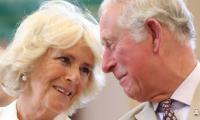KARACHI: The central bank on Saturday kept its policy rate stable at 5.75 percent for the next two months, leaving the rate unchanged since July 2016 to support growth pace and to rejuvenate weak external sector.
“Following detailed deliberation and taking into consideration the strong likelihood of continued growth momentum, contained inflation and the challenges on the external front, the Monetary Policy Committee has decided to maintain the policy rate at 5.75 percent,” State Bank of Pakistan’s (SBP) Governor Tariq Bajwa told a news conference.
In his first appearance to media after taking the charge of Governor SBP, he said growth trajectory will remain up across all the sectors of economy and the inflation to stay below a six percent target fixed for the current fiscal year of 2017/18.
Bajwa said the central bank is working out a ‘flexible inflation targeting framework’, which aims at balancing price stability with economic growth, under its strategic vision 2020.
The central bank projected average consumer price index (CPI) inflation in the range of 4.5 – 5.5 percent for FY18.
“This projection is explained by lower than anticipated increase in international oil prices, recent behaviour of CPI inflation in June 2017, stable administered prices and lower inflationary expectations,” it said in a statement.
In June, headline inflation softened at 3.9 percent year-on-year, while core inflation stayed at 5.5 percent since April 2017.
“The latter does indicate rising demand,” the central bank said. “However, marginally lower six-month inflation expectations – captured by IBA (Institute of Business Administration) - SBP’s Consumer Confidence Survey of July 2017 show that these remain reasonably anchored.”
Annual consumer inflation stood at 4.16 percent for the last fiscal year of 2016/17. SBP projected CPI inflation at 4.5 to 5.5 percent in 2016/17, while the government was expecting it at 4.3 percent. Annual inflation for 2015/16 was recorded at 2.86 percent.
The central bank said domestic demand is set to gain further traction as evidenced in the current growth in the real sector, credit to private sector and imports.
Yet, it fears that balance of payments may be facing more pressure, fuelled by depletion of foreign exchange reserves, which is reeling from a slowdown in exports and weaker remittances.
SBP foreign exchange reserves declined to $16.1 billion at the end of FY17 as compared to $18.1 billion in FY16.
“A growing current account deficit remains a challenge for the economic stability… we are managing the current account gap through foreign exchange reserves, but we are considering various options, mix of policies and formulas to address the current account issue,” Governor SBP said. “We will be able to meet the challenge in anticipation of better financial inflows and improvement in exports.”
He said the central bank is vigilantly monitoring the foreign exchange rate.
“Investigation into a depreciation of the exchange rate is underway,” Bajwa said, referring to rupee plunging the most in the past nine years early in July and lost more than three percent to 108.1 against the US dollar.
“The central bank will soon submit its report before the government,” he added.
Current account deficit widened to $12.1 billion in FY17, equal to four percent of GDP overtaking all local and foreign projections.
Yet, the central bank said the overall balance of payments is expected to stay at a manageable level in FY18, relying on steady anticipated financial account inflows and improvement in world growth.
“The first two features show that the economy is on an expansionary phase, while the third feature highlights near-term balance of payments challenges,” it added. “Based on this assessment coupled with positive domestic policy measures, Pakistan’s exports are expected to post gains. In view of the last four months performance, the decline in exports appears to have bottomed out.”
The central bank said current account deficit has been managed by foreign exchange reserves and a financial account surplus, which reached $9.6 billion during FY17 from $6.8 billion in FY16.
It further said imports are also expected to grow in line with continuation of China-Pakistan Economic Corridor-related activities and improving economic growth.
“While it remains uncertain whether remittances can return to posting meaningful positive growth very soon, stability of the external account and instrumental reserve accumulation depends upon timely inflow of budgeted bilateral and financial inflows in FY18 as well,” it added.
The SBP is also bullish on growth outlook of agriculture, industrial and services sectors in FY18.
The central bank said soft interest rate couple with other factors is fuelling private credit-off take.
“The increased economic activity, considerable increase in bank deposits, and low interest rates translated into private sector credit flows in FY17 reaching a decade high of Rs748 billion as compared with Rs446 billion in FY16,” it said.







